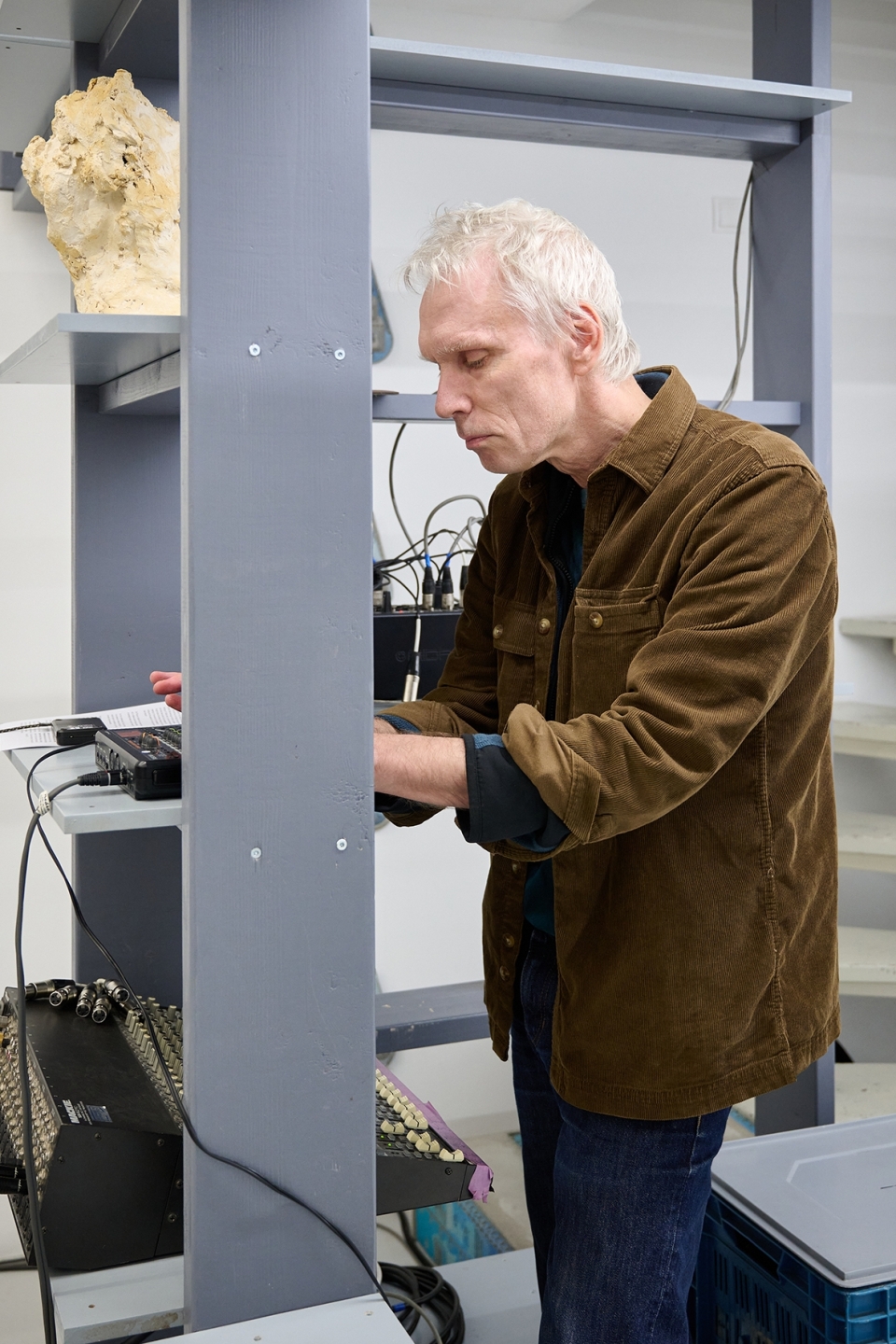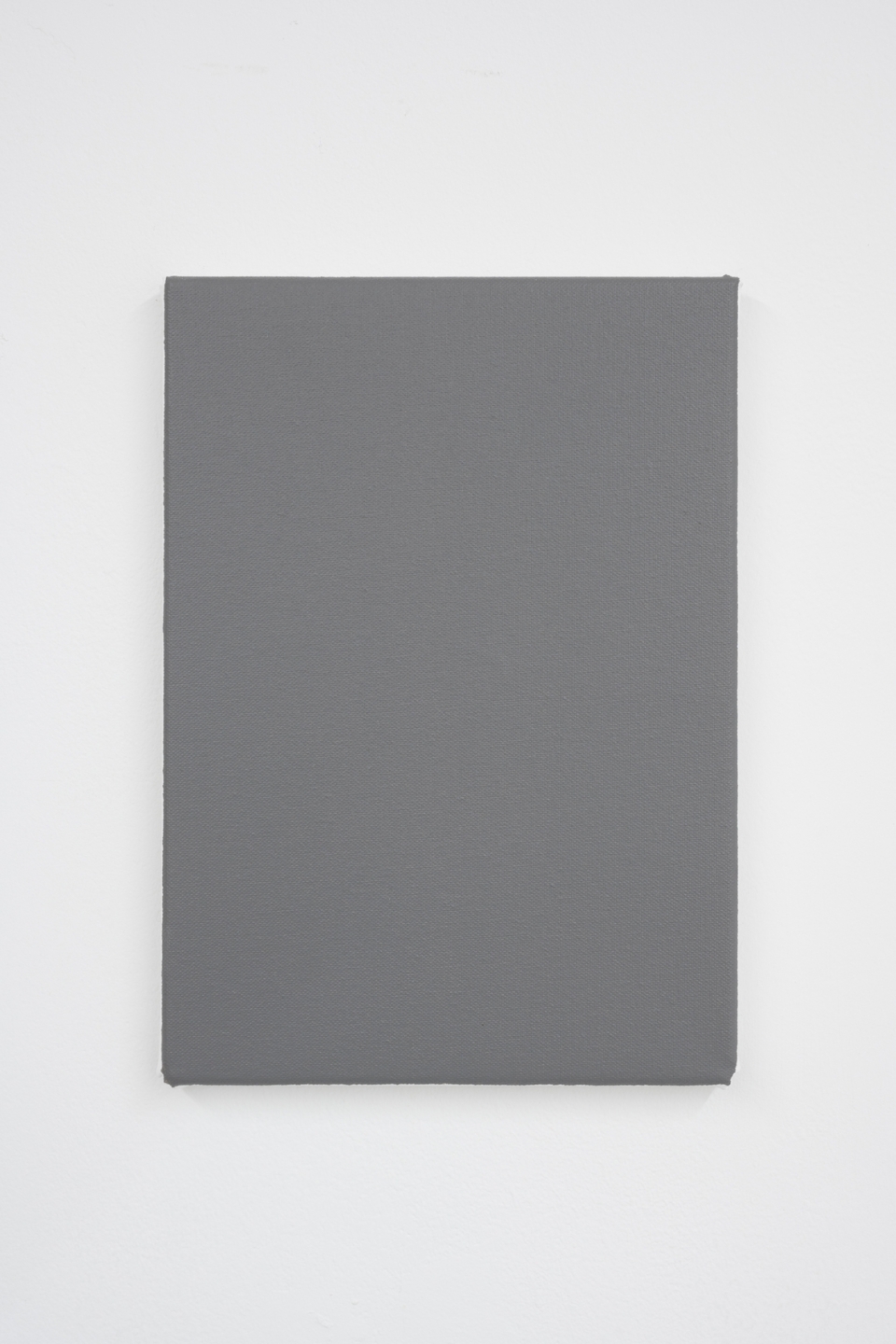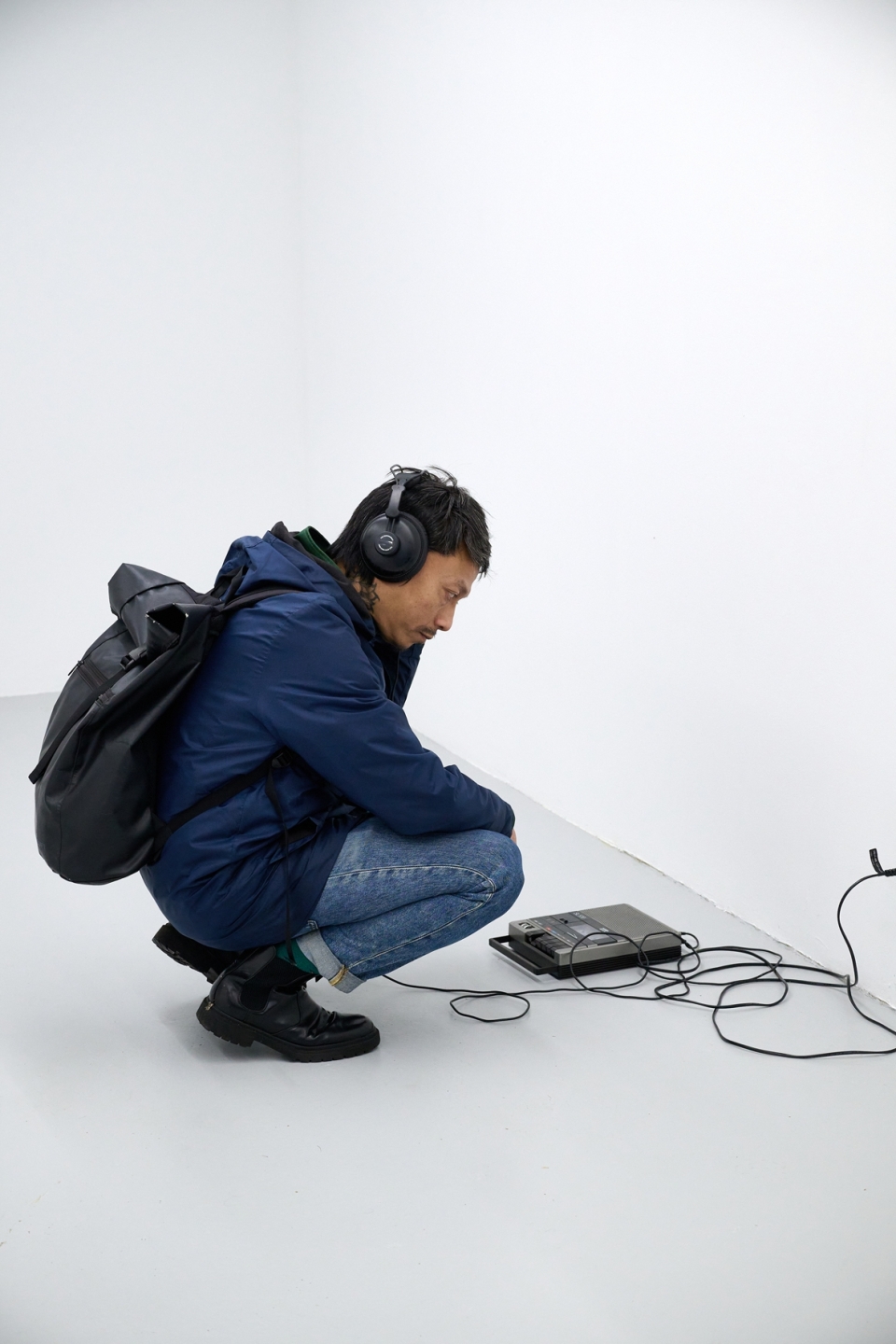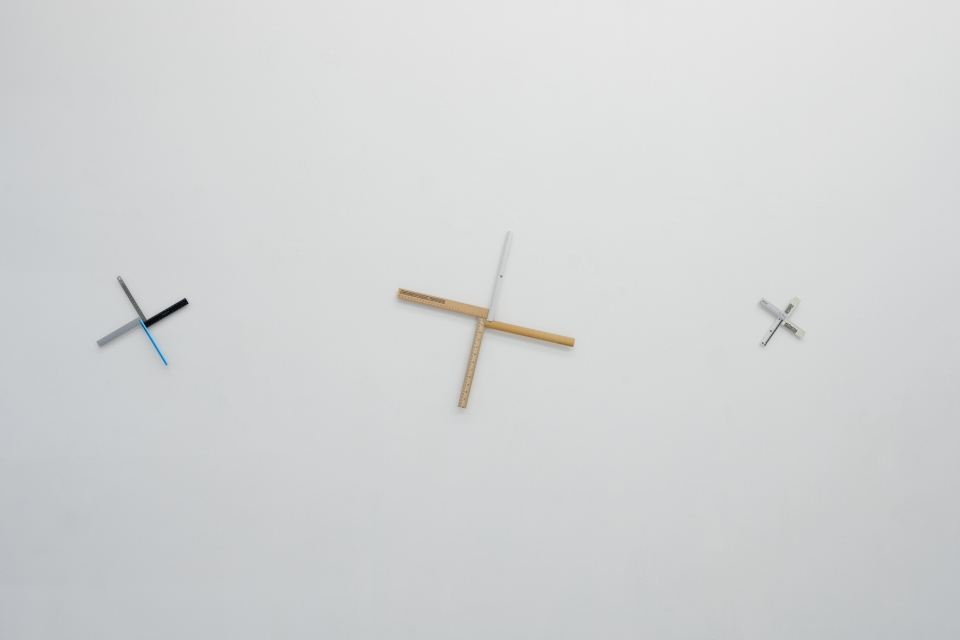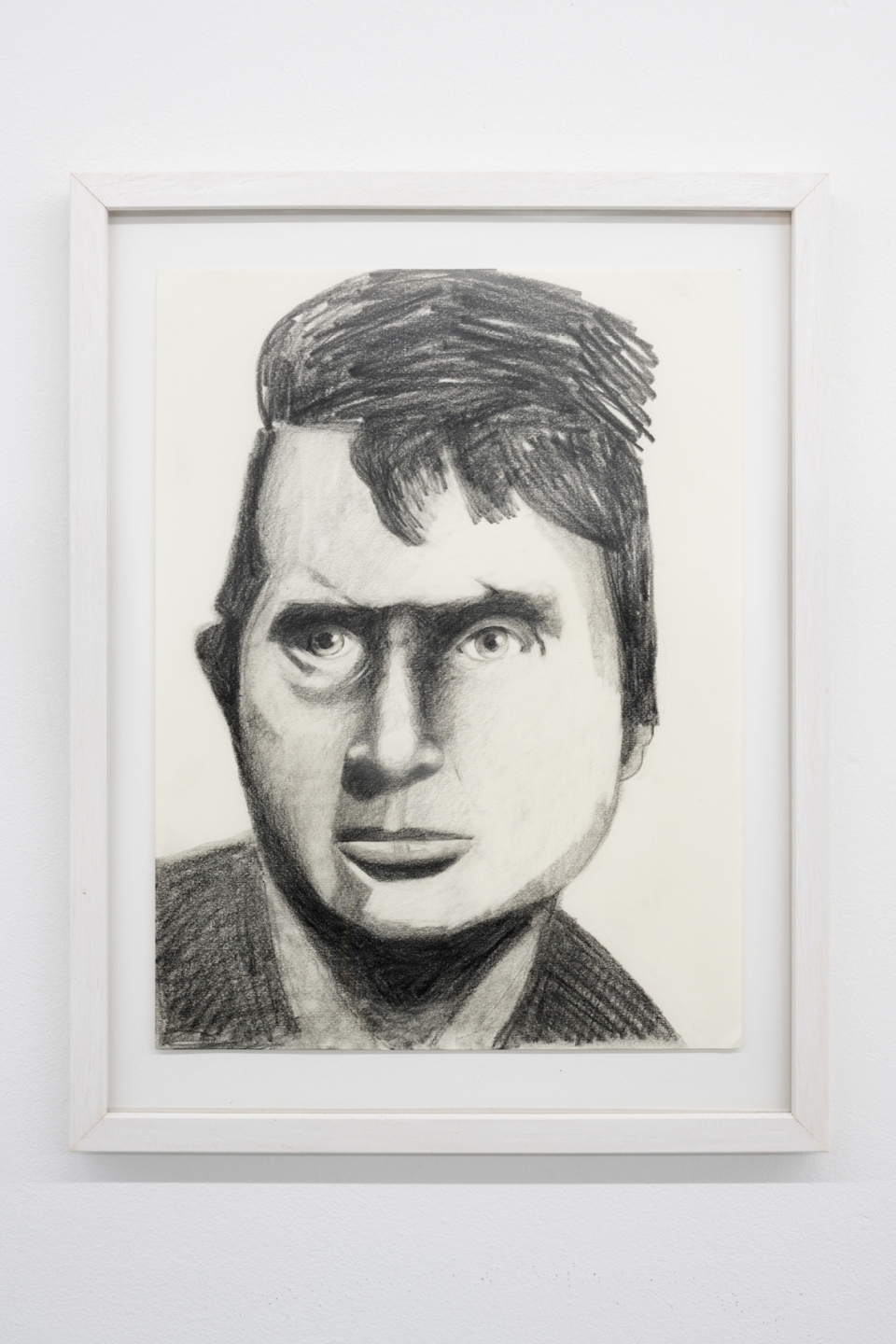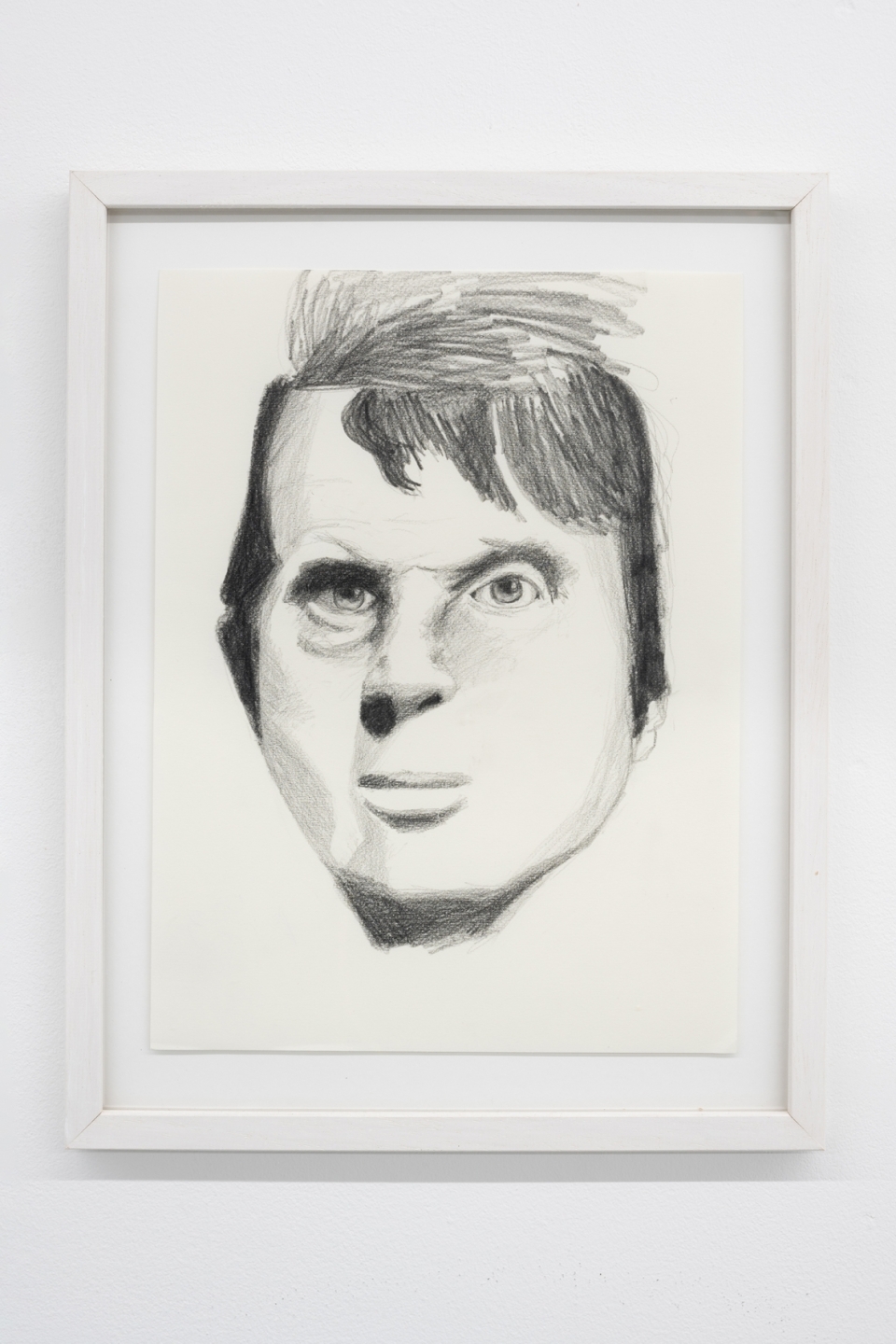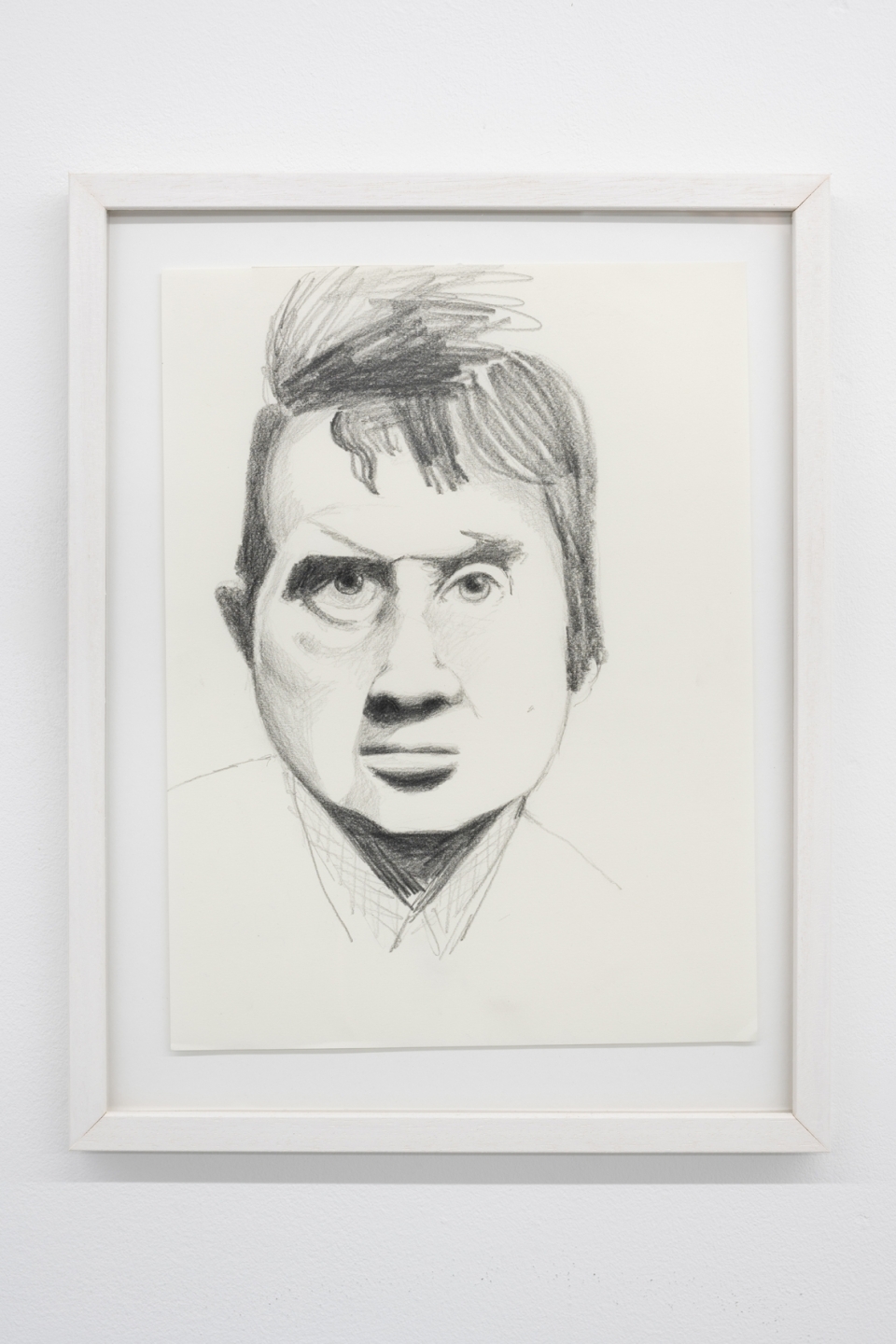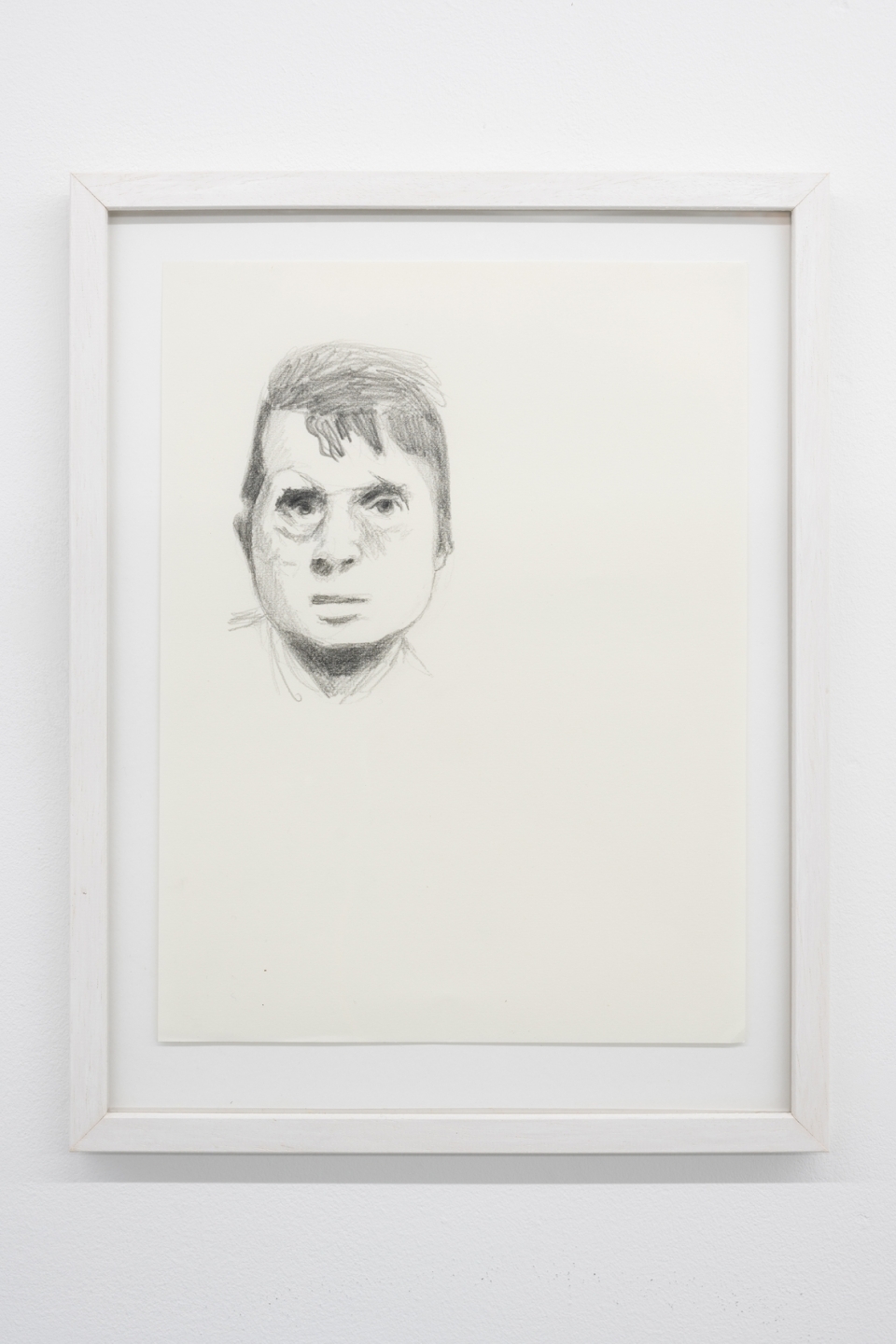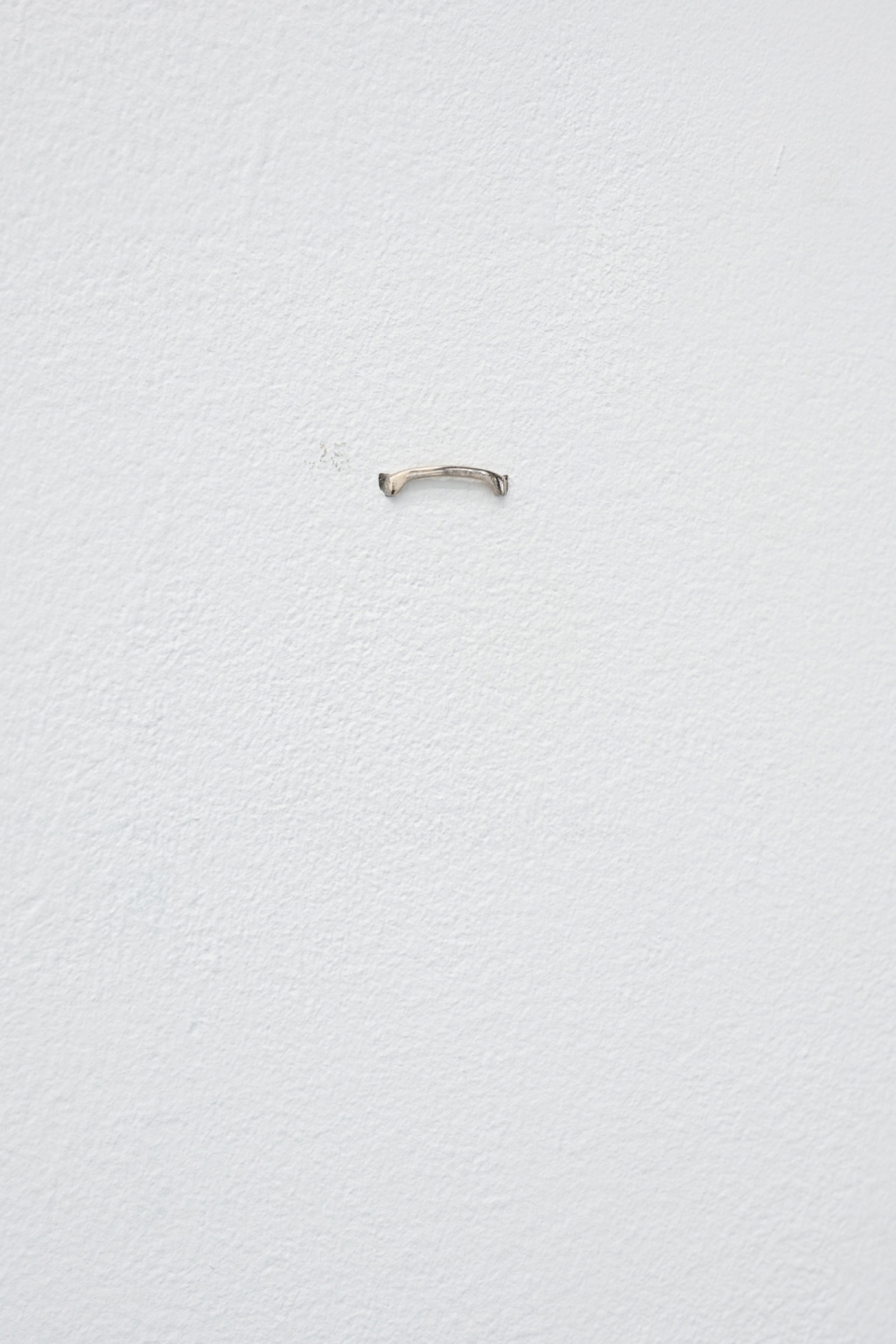Part 4: The Conformist
18.11.2023, 19:00
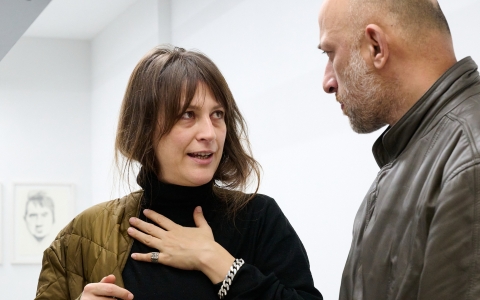

Exhibition opening of Part 4: The Conformist. Photo: Frans Parthesius
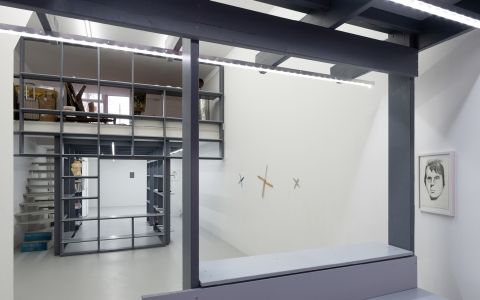

Exhibition view Part 4: The Conformist, December 2023, Rib. Photo: Lotte Stekelenburg
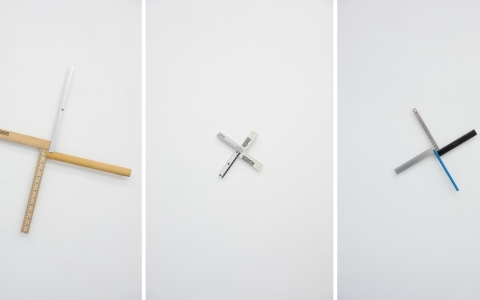

Annaïk Lou Pitteloud, Rulers, 2019 in Part 4: The Conformist. Photo: Lotte Stekelenburg
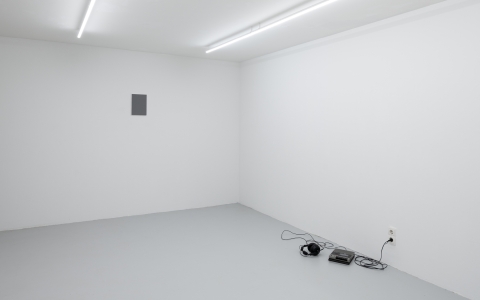

Exhibition view Part 4: The Conformist. Left: Steve Van den Bosch, CV (working title), 2023; right: Peter Fischli / David Weiss, Hotel Paris, 1993. Photo: Lotte Stekelenburg
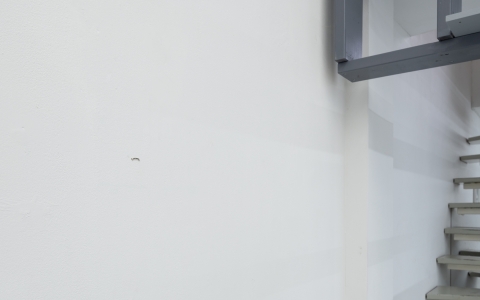

Exhibition view Part 4: The Conformist with on the left a work by gerlach en koop, It pays to talk to no one, no one, 2023. Photo: Lotte Stekelenburg
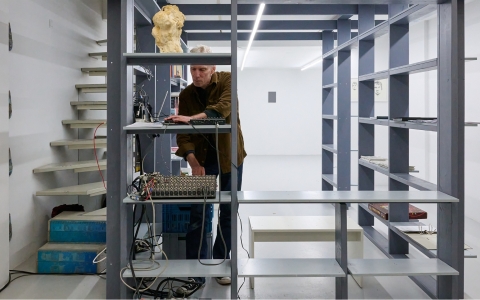

Reinier van Houdt performing during the exhibition opening of Part 4: The Conformist. Photo: Frans Parthesius
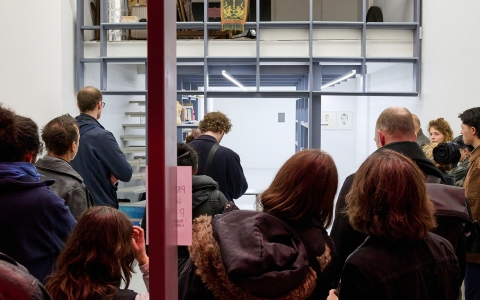

Exhibition opening of Volume II, Part 4: The Conformist. Photo: Frans Parthesius
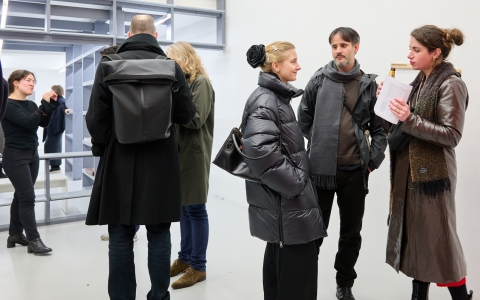

Exhibition opening of Part 4: The Conformist. Photo: Frans Parthesius
Exhibition Opening: 19:00
Performance by Reinier van Houdt: 20:30
In this last part of The Last Terminal, Volume II, Part 4: The Conformist Rib welcomes new works by Steve Van den Bosch, Annaïk Lou Pitteloud, Shahin Afrassiabi, gerlach en koop. We are curious how this collection of works and iterations converse with each other and extend the previous parts.
We warmly welcome you to join us for the opening with a special performance by pianist and composer Reinier van Houdt. On 17 December 2022, during the opening of The Last Terminal: Reflections on the Coming Apocalypse, Volume I, Part 6: The Siphon, Reinier van Houdt conducted a special durational performance of more than two hours titled ENTREE. In Volume II, Part 4: The Conformist, Reinier van Houdt performs part two, with the working title Transfinite Spectre, a compressed and intense counterpart of ‘only’ ten minutes.
These pieces respond to the structure and premise of our program, where ending(s) inform its evolving structure. Reinier van Houdt continues with this second piece inspired by Walter Benjamin’s idea that the real catastrophe is continuity. “That there are no longer any critical moments in history in which we could break away from the status quo. Continuity is disguised as a happening that gives us a false sense of development, where the basic currents are conjugated and interrupted in a kind of closed circuit.” For his performance Reinier collected raw contingent ‘basic continuities’ such as noise, static, electromagnetic waves, noise from the power grid, etc., and released them in the classical structure of such a ‘happening’, for example, a Beethoven symphony: the sounds haunt the ruin of the symphony, transcend the duration, frequency and density of the original syntax and unmask the structure and its continuity, opening it to the contingency of reality.
Until a week before the opening, Steve Van den Bosch’s work was still in the process of being made. The title of the work is CV (working title). I speculated, that CV, refers to a personal matter related to the working life of the artist, whereas (working title) refers to his CV, evidencing artistic career, being a work in progress, something under construction and still in the making, in the frequency of a specific type of the color grey Liquitex Neutral Grey N° 5.”
After the painting was revealed, there were no surprises there. It was indeed as Steve had explained, a canvas painted in a specific color of grey using a roller. Grey on the other hand could denote a color in transition, not only from black to white, or white to black, but also towards a color with a more defined identity. A color that could become established in the future. Juliette Mirabito, our production manager, sent me photos of the painting, showing also her hand next to it, to indicate that the grey tends towards blue, unlike what the picture revealed on my uncalibrated screen: reddish. Before looking up the symbolic meaning of grey in art, I speculated that, like the Dutch skies, grey refers to depression, pessimism and perhaps even morbidity or old age. After my search I found several other characterizations: the color of intellect and of compromise. A diplomatic color. Conservative, elegant, and cool, though it can be a bit mysterious. Add to this the artists effort to leave out traces of brushstrokes, preventing any form of expression, that might reveal a modest belief in the possibility of a future artistic recognition. Then I had as an afterthought that with this work Steve is secretly re-emphasizing a previous work that he showed earlier in Rib. Work’s whose expression solely depends on the mediation of the curator who is revealing his projections, inner anxieties and phantasies.
Van den Bosch will also present a sound piece by artists Fischli & Weiss titled Hotel Paris. This hour-long audiotape of a French radio broadcast, which had been recorded beforehand in the artists’ Zurich studio, was played for the duration of a group exhibition entitled Hotel Carlton Palace, Chambre 763 in 1993 in Paris, curated by Hans-Ulrich Obrist.
Annaïk Lou Pitteloud will show three works, all titled Rulers. These works are comprised of yardsticks, which the artist collected by purchasing them in museum shops and reconfiguring them in the shape of a cross. In 2020, Daniel Morgenthaler, freelance author and curator of Helmhaus Zurich, described the works in the following way: “In her work, the merchandise articles of the art world often become an original work, loosely based on Marcel Duchamp and his principle of the ready-made, the unabashed declaration of an everyday object as a work of art. Here, AnnaÏk Lou Pitteloud not only takes the art business’s fetish for the original—in the never-ending age of its technical reproducibility—ad absurdum, but she also uses the rulers to question the prevailing artistic and political constraints of marketing and quantification.”
Shahin Afrassiabi continues his exploration and character study of Francis Bacon’s face based on a photograph by Francis Goodman (1971) with new drawings, this time using pencil. Recently he said: “I wanted to paint heads, faces; because at some point it became clear to me that an expression on a face is not unlike the expression of a painting, I mean in the way that we can read both. It’s all about feeling and attitude both projected and embodied. There is no personality in these pictures that we know, definitely not Bacon. The paintings are simply faces, a kind of radical reflexivity.”
The new works by Shahin Afrassiabi will be inspired by drawings made by visitors to Rib’s drawing session. Participans made charcoal drawings of Francis Bacon’s face, insipired by drawings by Afrassiabi.
When asked about their work It pays to talk to no one, no one gerlach en koop answered: “For a long time, Roland Barthes kept in a drawer a piece of rib that had been surgically removed from his chest when he was a child (by returning it to him the Swiss physicians stressed: your body belongs to you, every part of it). The drawer was the kind intended to ease the dying of objects, to let them acclimatise for a certain amount of time, in a long and bleak agony. If one day he manages—at last—to rid himself of this piece of bone by throwing it down from the balcony, he sends a scout ahead with that.”
Shahin Afrassiabi was born in Tehran. He studied art at Goldsmiths University in London. He works in Andalucia, Spain. Selected solo exhibitions include Paintings 2016–2018 at Soy Capitán, Berlin (2018); Radical Substance at Soy Capitán, Berlin (2015); Theory of Life at MOT International, London (2012); Subject to Form at Limoncello Gallery, London (2010). Afrassiabi’s work was part of several group shows, such as Been Caught Stealing at Kunsthalle Exnergasse, Vienna (2014), Showcase Preview at South London Gallery, London (2004); Transmission Gallery, Glasgow (2002); Early One Morning, Whitechapel Gallery, London (2002) and ICA, London (2000).
Steve Van den Bosch focuses on the seemingly expressionless, tacit and unspectacular. His work results from zooming in on the boundary between invisibility and pure materiality and puts the implications of artistic production, exhibition and interpretation into perspective with a taste for the absurd. By erasing, doubling, blurring, reversing or reconnecting the elements that define a work of art, objects and situations are created that continually undermine their own status as works of art and almost casually refer to the surrounding conditions from which work can emerge and in which it is subsequently exhibited. Van den Bosch was a resident at HISK in Antwerp (1998–2001) and the Rijksakademie van beeldende kunst in Amsterdam (2006–07). He obtained a doctorate in visual arts at the University of Antwerp in 2016. Van den Bosch currently teaches at LUCA Brussels.
Collective artist gerlach en koop works in twofold to invite a third. They live and work in The Hague, NL and Brussels, BE. Solo exhibitions include GAK Bremen, DE; Bonnefantenmuseum, Maastricht, NL; de Appel, Amsterdam, NL; Temporary Gallery, Cologne, DE; Alte Fabrik, Rapperswil-Jona, CH; 1646, The Hague, NL; Kröller-Müller Museum, Otterlo, NL; Library Van Abbemuseum, Eindhoven, NL; Stroom, The Hague, NL. Their work has been part of group exhibitions at the Project Arts Centre, Dublin, IE; La Criée, Rennes, FR; FIAC, Jardin des Tuileries, Paris, FR; de Appel, Amsterdam, NL; Mu.ZEE, Oostende, BE; de Vleeshal, Middelburg, NL; Netwerk, Aalst, BE; Le Grand Café, Saint-Nazaire, FR; Stroom, The Hague, NL; A Tale of A Tub, Rotterdam, NL; Lesage, Brussels, BE; S.M.A.K, Ghent, BE; the Baltic Triennial at CAC Vilnius, LT and Bunkier Sztuki, Kraków, PL; and Hammer Museum, Los Angeles, USA.
Peter Fischli & David Weiss were both born in Switzerland and established a collaborative partnership in the late 70s. They are known for their humorous and playful art across various mediums, challenging conventional ideas of art and the artist. Their work transforms everyday objects and experiences, placing them in alternative narratives that highlight the subjective nature of art. The duo has exhibited widely in the United States and Europe, with solo shows at prestigious institutions like the Guggenheim Museum in New York. They’ve also been part of group exhibitions at major venues such as the Museum of Modern Art in New York and the Tate Modern in London, and have participated in multiple Venice Biennales. A monograph on their work was published by Phaidon in 2006. While Peter Fischli continues to live and work in Zurich, David Weiss passed away in April 2012.
Olivier Goethals studied Architecture and Urban Development. He is working as architect and artist. In his wide practice he researches the connection between space and consciousness. Goethals made spatial interventions and artistic installations for venues, such as Het Nieuwe Instituut, Rotterdam; Z33, Hasselt; Extra City, Antwerp; Be-Part, Waregem; SMAK, Ghent; and Palais De Tokyo, Paris. Previously he worked as a freelance senior architect for De Vylder Vinck Taillieu (2008–16). Since 2010, he is teaching at the KULeuven Architecture Department. He was a guest critic at RU Ghent faculty of Architecture, LUCA School of Arts Experimental Studio and ETH Zurich faculty of Architecture. Goethals is in charge of the design and implementation of all spatial interventions for the art collective 019.
Pauline Hatzigeorgiou is a Brussels-based curator. She is the co-founder of SB34 and
has been working as an associate curator with several institutions since 2015 (Wiels, Bozar, Greylight Projects, CWB-Paris, among others). In her curatorial projects, she pays particular attention to the institutional frames, modalities of production and sociality at work in the field of the exhibition. She is also an art historian, writer and teacher.
Reinier van Houdt is a musician/composer from Rotterdam (NL) working from a fascination for matters that escape notation: sound, timing, space, physicality, memory, noise, environment—points beyond composition, interpretation and improvisation. He has released his work on five solo albums on the labels Hallow Ground, Discreet Editions, Erstwhile, Elsewhere and Matière Mémoire. He has collaborated with artists including Christian Marclay, Annea Lockwood, Alvin Lucier, Petra Strahovnik, Robert Ashley and Luc Ferrari.
Mathew Kneebone’s practice is founded on research into uncertainties surrounding technology, often combining different histories, myths, and folklore. His work touches upon various media including drawing, electronics, writing, sound, and performance to reconfigure or re-contextualize certain technologies, exploring an ambivalent blend of past and present. His work has recently been exhibited at Kunstverein, Amsterdam; 019, Ghent; Extra City, Antwerp; and Cloaca Projects, San Francisco. His writing has been published in Trigger Magazine, OASE Journal for Architecture, The Bulletins of The Serving Library, Another World, Umwelten, among others. He has given talks and workshops at Minnesota Street Project, San Francisco; V2_ Lab for Unstable Media, Rotterdam; Central Saint Martins, London; Sandberg Instituut, Amsterdam; San Serriffe, Amsterdam; Sitterwerk, St. Gallen; EKA Gallery, Tallinn; UEL, London. Kneebone teaches at California College of The Arts, San Francisco, where he is thesis writing supervisor.
Annaïk Lou Pitteloud lives and works between Bern and Brussels. Her work makes use of different media to direct the viewer’s attention to the invisible components of image-construction, the museum space and the creative process itself. Pitteloud’s pared-down vocabulary raises critical questions to do with social issues, while challenging the art world’s mechanisms and its codes of perception, transmission and presentation. Her work has been presented amongst others in: Musée cantonal des Beaux-Arts Lausanne, CH; Kunstmuseum St. Gallen, CH; Museo cantonale d’Arte Lugano, CH; Kunsthalle Bern, CH; Kunstinstituut Melly (formerly known as Witte de With), NL; Riga Biennial, LV; Moscow Biennale, RU; Shanghai Biennale CN.



